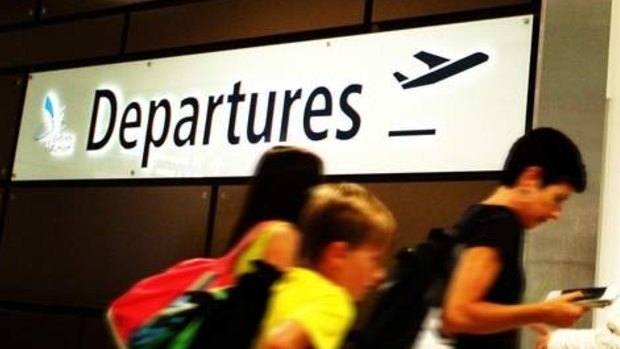This was published 3 years ago
NZ government expected to agree on Trans-Tasman bubble start by mid-April
By Luke Malpass

This will be exciting news for Australians who have both friends and relatives in New Zealand.Credit: iStock
The New Zealand government could decide as soon as Monday to open a quarantine-free bubble with Australia from mid-April, Stuff.co.nz reports.
It is understood that a paper is currently being discussed in a NZ Cabinet committee around the final form of the bubble, and that a meeting of the full Cabinet could make decisions early in the next week. The decision is expected to be signalled in the coming week, for a mid-April start.
A bubble would open up quarantine-free travel within New Zealand and Australia, while each country would retain the right to halt such travel as it sees fit. Airports would be divided into "green zones" and "red zones". Green zones would be free and open travel, while red zones would be for travellers coming from elsewhere in the world to transit or quarantine.

Other airports that are understood to be participating in the bubble arrangement are Wellington, Christchurch and Queenstown.Credit: Peter Braig
Even a decision as soon as Monday would give a tight turnaround. COVID-19 Recovery Minister Chris Hipkins told Parliament yesterday that Auckland airport would require 10 days to be ready for the bubble, while the airlines have indicated that they would require three weeks to get geared up and ready to fly.
Other airports that are understood to be participating in the bubble arrangement are Wellington, Christchurch and Queenstown.
The NZ government is also buoyed by the fact that all border workers should be fully vaccinated by the end of the month and that as the vaccine rolls out further, it will become even tougher for COVID to escape from airports and quarantine facilities.
Remaining issues that the NZ government is currently working though are smaller logistical ones, according to government sources, such as what happens if one country closes the border and a plane is in the air, on the tarmac, or passengers are at the airport. And, what happens to travellers stranded across each side of the Tasman if travel is shut down.
New Zealanders should also expect that any travel to Australia will come with a warning: that you may have to hunker down in the unlucky instance that a cluster breaks out, and you are caught in the middle of it.
Most likely, however, it is envisaged that unless a Kiwi or an Australian is caught in the centre of a cluster, there would be a three-day shutdown while the situation was assessed, and then travel could potentially resume for most people.
Events appear to have moved quickly since February.
As Stuff reported last month, officials had concluded 11 rounds of talks with Australia over a joint decision-making framework that would govern the bubble. Under this arrangement there was going to be an agreed set of circumstances that would govern so-called "green zone" travel rules between the two countries.
For example, the August COVID outbreak and the Papatoetoe cluster in Auckland would have closed off green zone travel, while the other mini-clusters that have been contained, would not have stopped travel.
But after the Australian Government, which opened its border to New Zealand late last year, suddenly suspended quarantine-free travel after the Northland case of COVID-19, the Australian Government apparently cooled on the idea of having a joint set of rules. At the time, that move blind-sided New Zealand and angered Prime Minister Jacinda Ardern.
We now know that that was because an agreed arrangement had almost been finalised in which such unilateral action would not have been possible.
As February progressed, the Australian Government became more favourable towards each country effectively having the right to suspend travel as they see fit (either out of political expediency or on the advice of its health authorities).
So since February, the New Zealand government has changed tack and started working on a new, unilateral arrangement, which since December has been mostly driven by Chris Hipkins, New Zealand's Minister for COVID-19 Response.
Getting a bubble up and running would be a major boost for the NZ government as it has come in for criticism for being too slow in opening up New Zealand to the world. Their National Party has made a big issue of getting the bubble started immediately over the past few weeks, but government sources think that the opposition is running ahead of public sentiment, which wants travel but trusts the government to deliver it safely.
That said, the view within government is also that the bubble will never be perfect to start with and that, as with the rest of its COVID-19 response, some finessing and changes will be required. But, at some point, a decision has to be made.
As previously reported by Stuff, Scott Morrison blindsided his own ministers when he announced earlier in the year that Australia would roll out vaccinations by the end of February. Much of Morrison's public response to COVID-19 appears to be driven more by political pressure than much else.
Because the bubble will now be a unilateral arrangement, Australia will have to remove its ban on Australians travelling to New Zealand, in order to make it reciprocal.
Currently, the only Australian states allowing quarantine-free travel from New Zealand are Victoria and NSW.
But it should be expected that once the Australian Federal Government – which governs the national border and aviation laws – opens the border up that most states will fall into line. Queensland in particular is heavily reliant on the tourist dollar.
For most New Zealanders who have both friends and relatives in Australia and vice-versa, this will be personally exciting news. For tourism operators it could be some small ray of light at the end of a very tough year of closed borders. For both governments, it will be a big marker of progress in what will be a year-long grind out of this pandemic.
Sign up for the Traveller newsletter
The latest travel news, tips and inspiration delivered to your inbox. Sign up now.